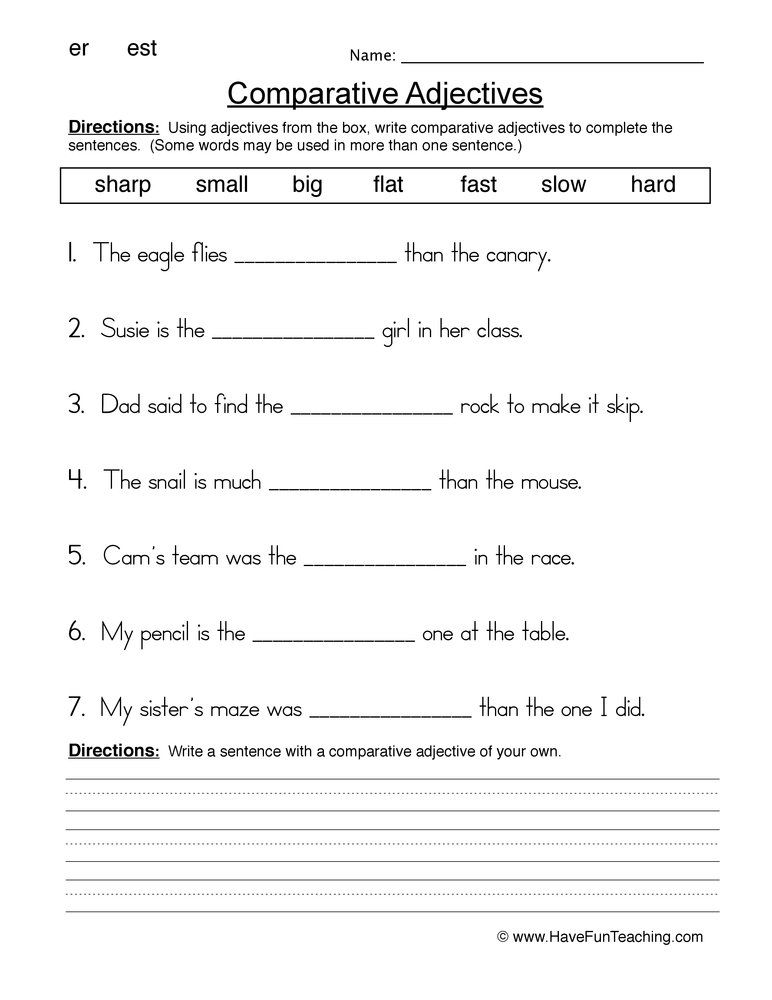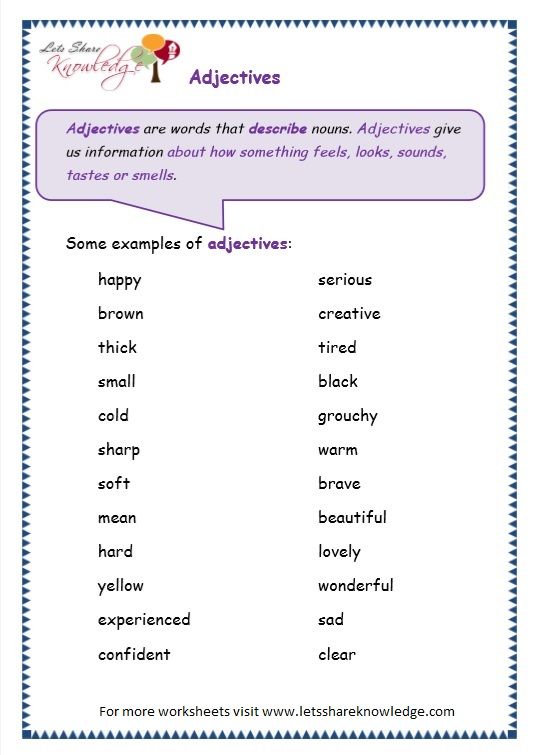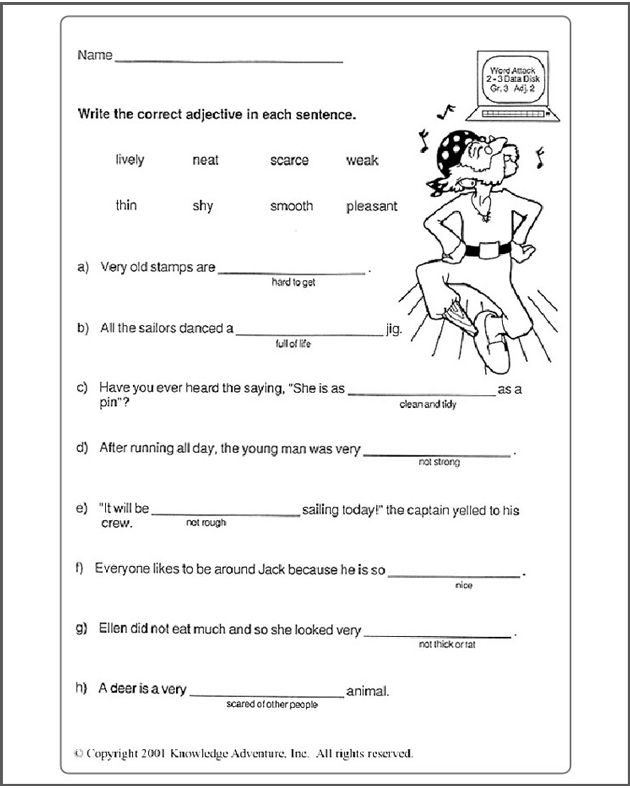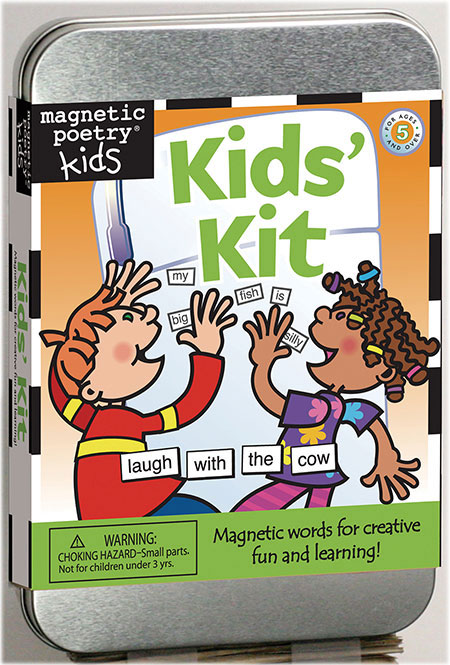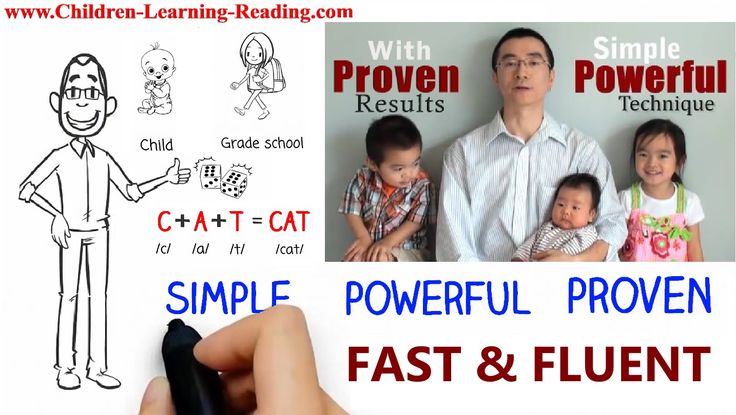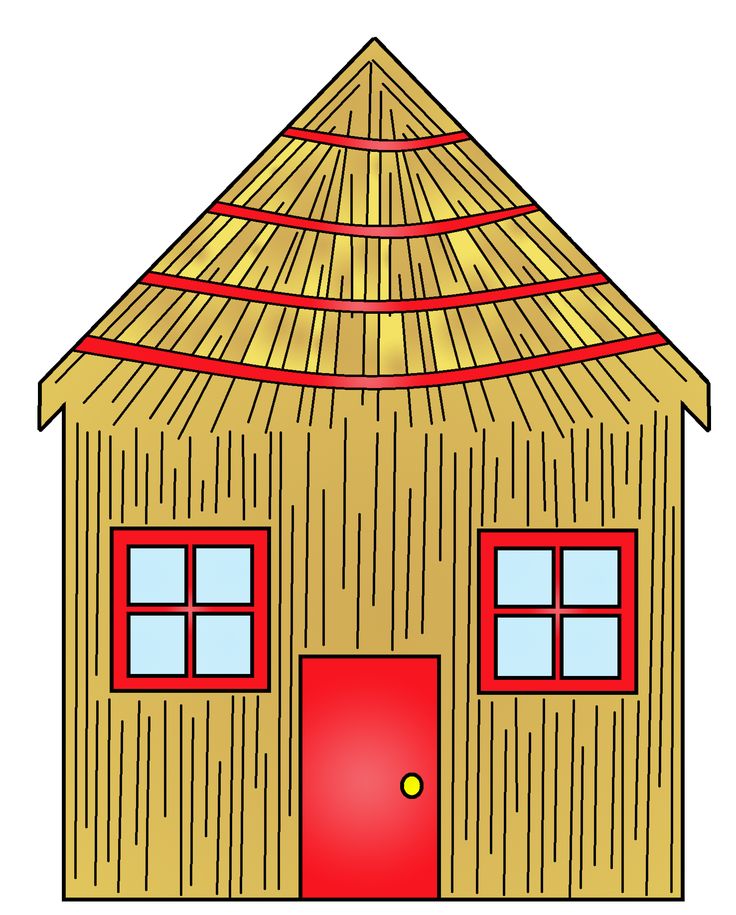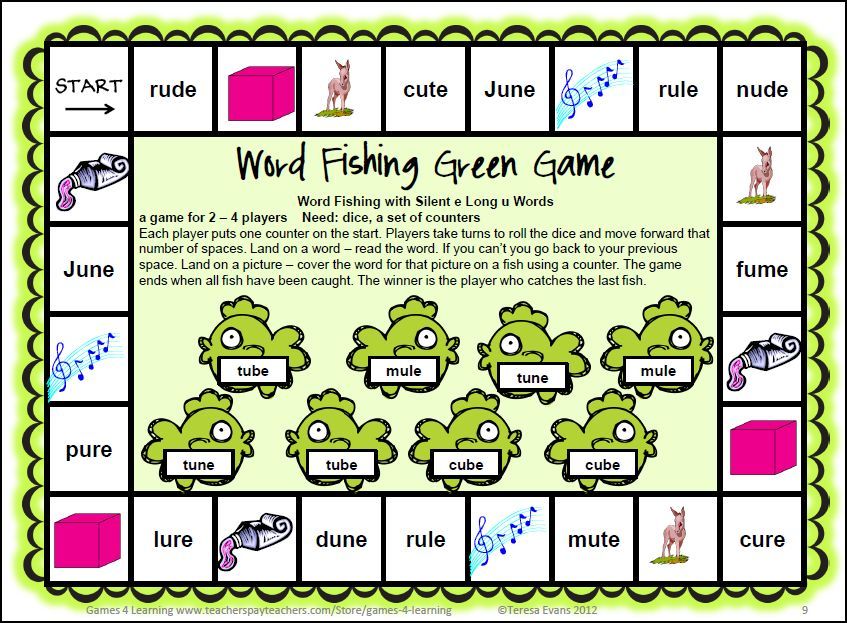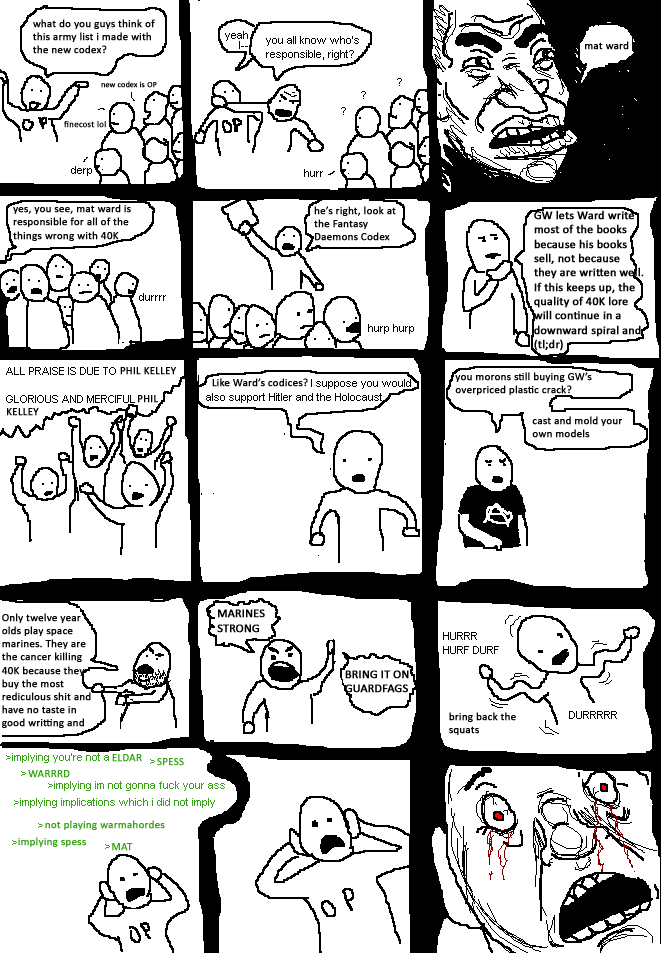Adjectives for third graders
Adjectives | 3rd Grade Grammar
So far you've learned that nouns are words for people, places, or things.
Adjectives are words that describe nouns.
Check out some examples:
slow snail
hot soup
happy girl
many turtles
taller tree
Can you spot the adjective in the sentence below? 👇
Tip: First find the noun. The word describing the noun is the adjective.
The little duckling quacked.
Duckling is the noun.
What adjective is describing the duckling?
That’s right! Little is the adjective. 🎉
Types of Adjectives
There are eight types of adjectives. They all have fancy names, but they're pretty easy to use.
Let's learn the eight types of adjectives. 😺 We'll cruise through them quickly. 🏄♀️
1. Descriptive Adjectives
That is a fast car.
That car is fast.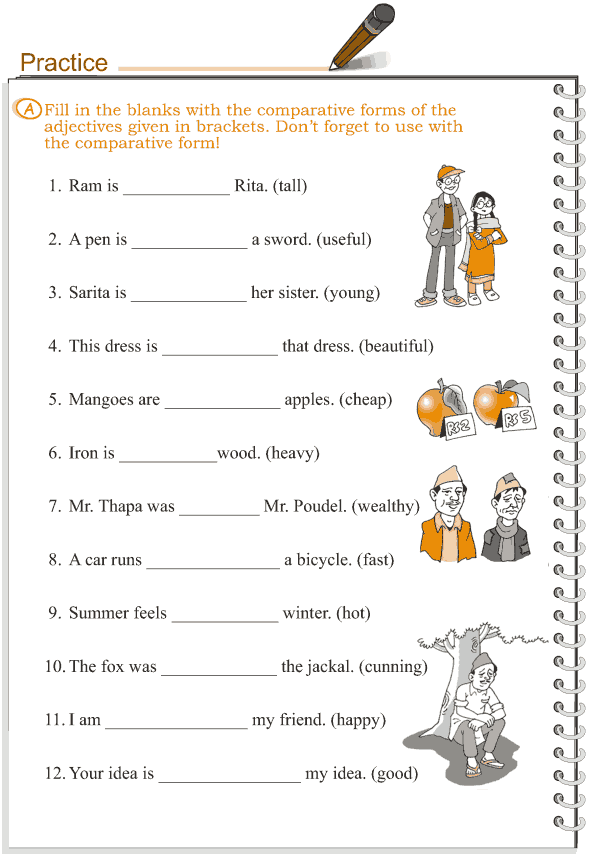
The happy boy laughed.
I am happy.
Descriptive adjectives describe how nouns look or feel.
Most adjectives are this type.
Adjectives can go before the nouns they describe.
The giant pizza went into the oven.
Adjectives can also go after linking verbs (like 'is', 'am', 'are' or sensory verbs like 'smells').
The pizza is giant.
The giant pizza smells delicious.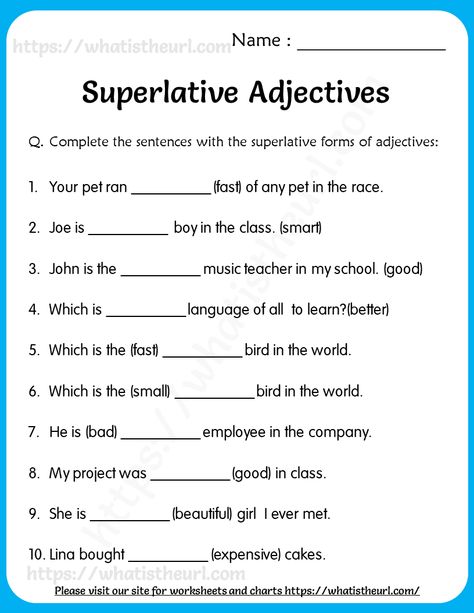
Both giant and delicious are adjectives that describe pizza. 👍
Tip: Some common nouns can be used as descriptive adjectives too. Take a look:
The history teacher gave a great talk.
The computer museum was awesome!
2. Quantitative Adjectives
I have ten toes.
That costs three dollars.
I ate the whole pizza.
Quantitative adjectives like 'ten' tell how many there are of something.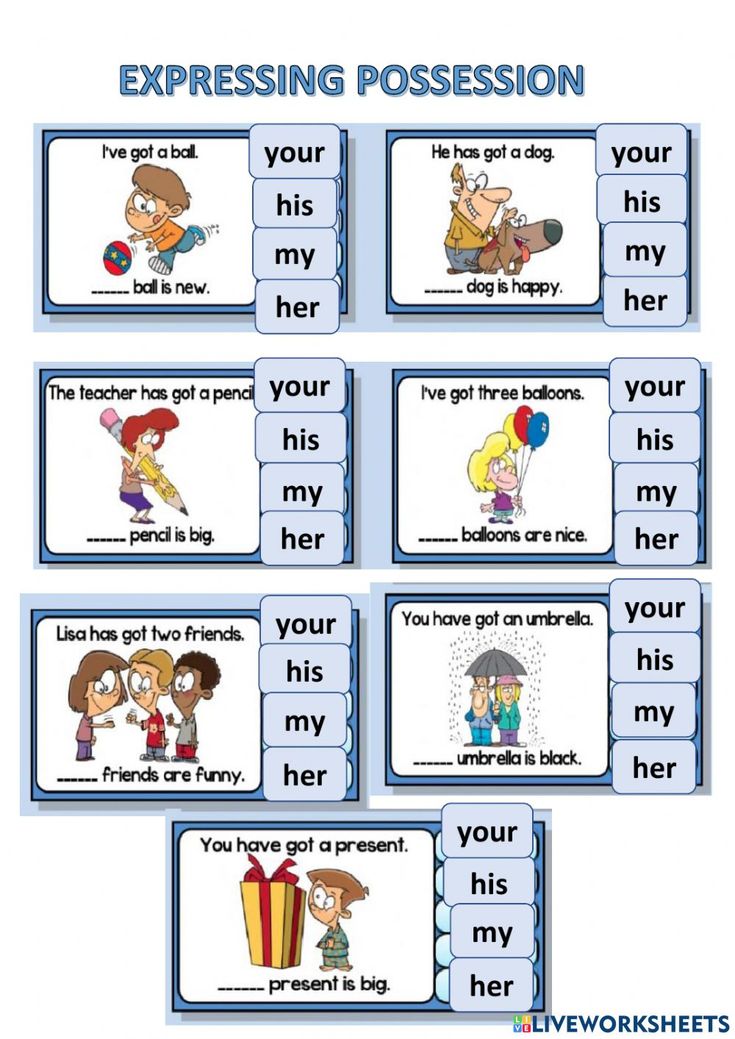
Tip: 'quantitative' means having to do with quantity, or how many there are.
3. Proper Adjectives
American food is delicious.
Italian cars are more exciting than German cars.
I love Burger Blitz burgers.
Proper adjectives are proper nouns that describe other nouns.
4. Demonstrative Adjectives
That tree is gorgeous.
This plant is tall.
Those trees are gorgeous.
These plants are tall.
The four demonstrative adjectives are 'that', 'this', those', 'these'. They help you talk about a specific someone or something near or far.
5. Possessive Adjectives
Those are my speakers, Jim's chairs, his table, and her snacks. Your guests can invite their friends to our party.
Possessive adjectives show who owns a noun, like 'my', 'his', 'her', 'your', 'their', 'our', and possessive proper nouns like Jim's.
6. Interrogative Adjectives
Which chair would you like?
What movie do you want to watch?
Whose jacket is this?
The interrogative adjectives 'which', 'what', and 'whose' help you ask a question.
7. Indefinite Adjectives
I want some pizza.
It will be a few minutes.
Most people agree with you.
All of the students passed.
Indefinite adjectives, like 'few', 'many', and 'most', are similar to quantitative adjectives. They show how many there are of something, but don't say an exact number.
8. Articles
I saw a whale.
The whale jumped out of the ocean.
I was in an airplane.
Articles are the words 'a', 'an', and 'the'.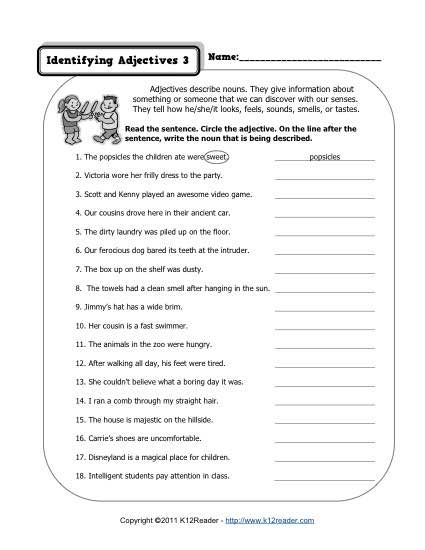 They are special adjectives that show if you're talking about a specific, or unspecific noun.
They are special adjectives that show if you're talking about a specific, or unspecific noun.
You'll learn more about articles in the next lesson. 👍
Spotting Adjectives
Can you spot the adjective in this sentence? 👇
The popcorn at the theater was salty!
Great! Salty is the adjective. It comes after the linking verb 'was' and describes the noun 'popcorn'. 🎉
Great job learning about adjectives!
Now, complete the practice. It'll help you remember for longer. 😺
8 Adjective Activities for Elementary Students
This blog post is all about teaching adjectives in your elementary classroom. Adjectives are important in reading, writing, and language.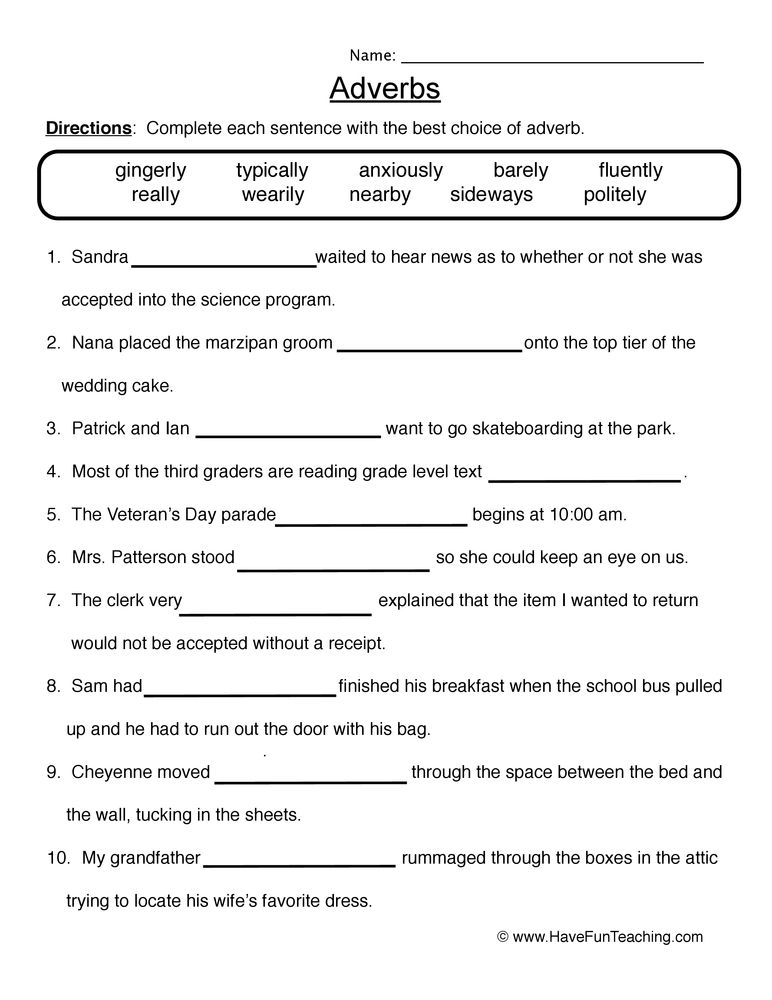 They are going to be present across all content areas and are important for students to understand. In addition to understanding their function, students will also need to form and use different types of adjectives, modify adjectives, and correctly order adjectives. I have always found that with adjective activities, it is best to keep it simple. Students will need repeated exposure and practice, but the activity, itself does not need to be complicated. In this post, I will talk about 8 adjective activities that are going to help your students master this descriptive skill!
They are going to be present across all content areas and are important for students to understand. In addition to understanding their function, students will also need to form and use different types of adjectives, modify adjectives, and correctly order adjectives. I have always found that with adjective activities, it is best to keep it simple. Students will need repeated exposure and practice, but the activity, itself does not need to be complicated. In this post, I will talk about 8 adjective activities that are going to help your students master this descriptive skill!
Common Core Standards for adjectives will build at each grade level. The specific skills needed for each grade level are listed below.
- 1st Grade: L.1.1f- Use frequently occurring adjectives.
- 2nd Grade: L.2.1.e- Use adjectives and adverbs, and choose between them depending on what is to be modified.
- 3rd Grade: L.3.1.g- Form and use comparative and superlative adjectives and adverbs, and choose between them depending on what is to be modified.
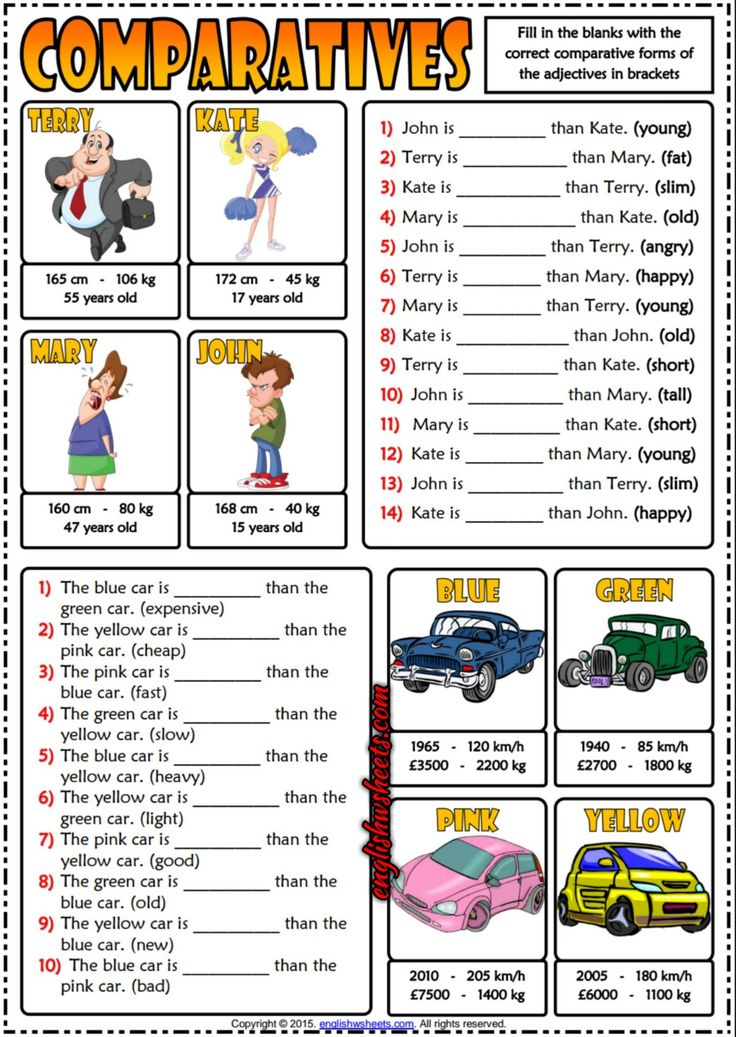
- 4th Grade: L.4.1.d- Order adjectives within sentences according to conventional patterns (e.g., a small red bag rather than a red small bag).
Introduce Adjectives with a Video
First, engage students with a video. BrainPop is always a great place to start when introducing a language skill. Not only is there a simple and engaging video describing the skill, but there are also interactive elements that follow. After showing your students the video, the quiz, graphic organizers, worksheets, games, and challenges can be added to your independent, partner, and small group activities.
Here are links to the BrainPop videos!
- BrainPop, Jr. Adjectives and Adverbs
- BrainPop Adjectives
Anchor Chart Ideas
Additionally, a descriptive anchor chart, like this printable/projectable one, can be displayed as a reinforcement for students as they are learning about adjectives. In younger grades, it is beneficial to remind students about the types of descriptions and where adjectives can be found.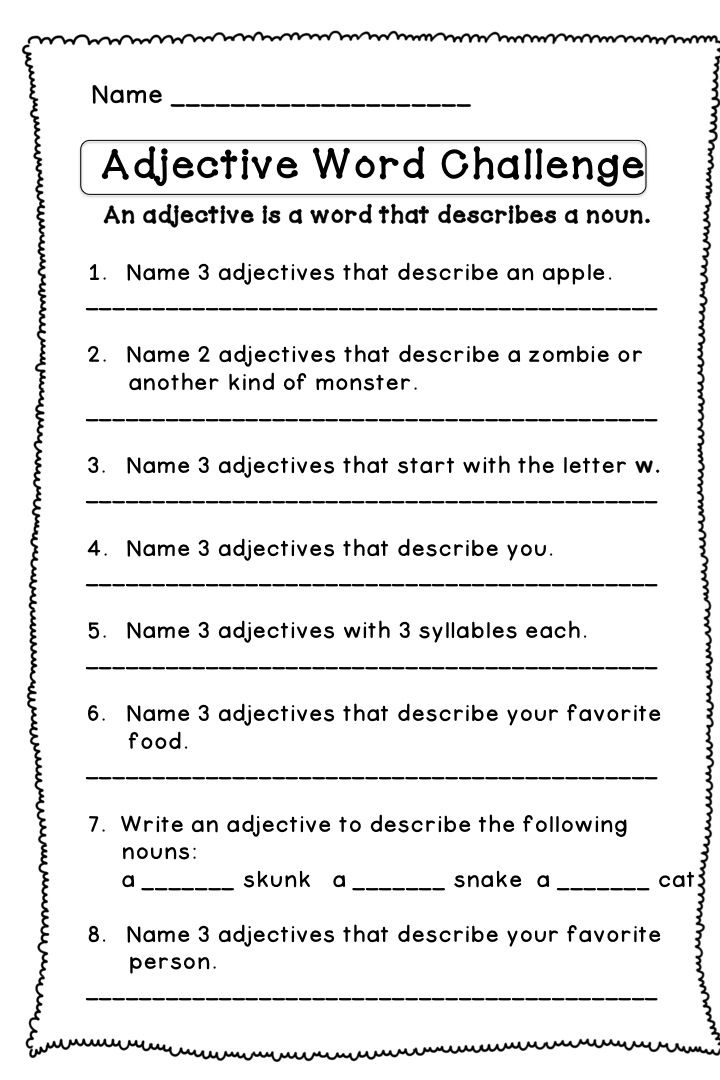
This anchor chart can be made interactive by simply using it as call and answer prompts. Have students think of a noun. Ask each of the questions to the group and have them call back adjectives to describe their noun.
Create your own anchor chart for continuous adjective practice. Using a simple header and large white space can allow you and your students to add adjectives throughout the learning process. Keep markers or sticky notes nearby and anytime your students use adjectives, they can add them to the chart! In the anchor chart above, a 4th-grade class is able to rearrange the adjectives to put them in the correct order!
Use Mentor Texts to Show Adjectives in Action
An important addition to adjective activities will be mentor texts. Students will need repeated exposure to adjectives in action so that they can develop experience with the language. There are many adjective-focused mentor texts out there, but many of the picture books you already have will be perfect for this!
Each of the book links below are affiliate Amazon links!
- Many Luscious Lollipops
- Fun Dog, Sun Dog
- Hairy Scary Ordinary
- Lilly’s Purple Plastic Purse
Try a Simple Fold and Go Paper Adjective Activities
These simple paper-folding organizers can be great adjective activities. They can be used in several different ways and all you need is a sheet of paper! The activity above is called a “Shutterfold.” Students will fold their paper inward like a book and snip the font flaps in half. Have students describe nouns on the inner flap using multiple adjectives. Or, you can have students track adjectives from their reading!
They can be used in several different ways and all you need is a sheet of paper! The activity above is called a “Shutterfold.” Students will fold their paper inward like a book and snip the font flaps in half. Have students describe nouns on the inner flap using multiple adjectives. Or, you can have students track adjectives from their reading!
Another paper-folding activity is this “Fold and Snip!” Students will simply fold their paper in half and snip to create as many tabs as they need. For younger students, they may want to write adjectives that fall under the 5 senses. For older students, they may want to use the 9 adjective categories so that they can work on adjective order!
Show Pictures and Have Students Brainstorm Lists
Google images can be used to practice adjectives, as well! For example, search for an image that can be described using adjectives. Print or display the image and have students create a list of adjectives to describe the photo. Add this activity to partner or small group centers, independent work, or even homework!
Go on a Book Hunt
One of my favorite adjective activities is a Book Hunt.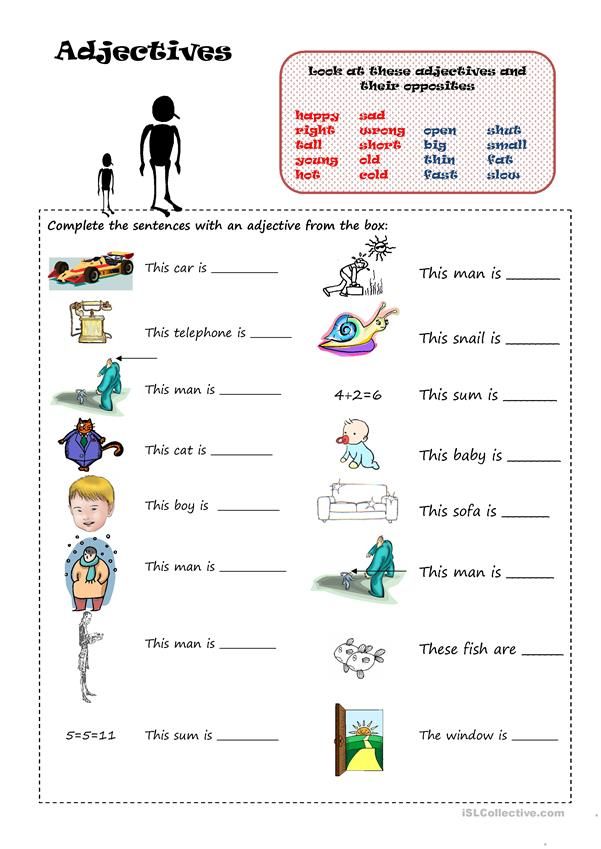 Students can grab books from the shelves and find as many adjectives as they can! Moreover, this activity can be modified for any type of learner and can be repeated over and over! As you can see in the activity above, students could either create a continuous list of all adjectives used or track adjective phrases on sticky notes.
Students can grab books from the shelves and find as many adjectives as they can! Moreover, this activity can be modified for any type of learner and can be repeated over and over! As you can see in the activity above, students could either create a continuous list of all adjectives used or track adjective phrases on sticky notes.
Using digital activities will allow you to measure students’ understanding. These adjective activities will be found in Google Slides, which means that you can quickly and easily check and address misunderstandings. I love that these Google Slides activities allow you to simply reset answers that students may have gotten wrong so that they can try again. I also love that they eliminate paper copying and grading! First, download the unit. Then, you can assign them to your students! They come ready-made for you.
- 1st Grade Adjective Digital Activities
- 2nd Grade Adjective Digital Activities
- 3rd Grade Adjective/Parts of Speech Digital Activities
- 4th Grade Adjective Digital Adjectives (coming soon)
Participate in a Partner Activity
Finally, partner adjective activities will be a great addition to your independent work time or centers. Students can work together on a printable activity, like the one above, and build on each others’ understanding. Even after instruction, be sure to mix-in adjective activities for students to work together on. Don’t forget to continue to add these activities back into student practice throughout the year!
Students can work together on a printable activity, like the one above, and build on each others’ understanding. Even after instruction, be sure to mix-in adjective activities for students to work together on. Don’t forget to continue to add these activities back into student practice throughout the year!
Suggested Resources for Adjective Activities
- 1st Grade L.1.1.f
- 2nd Grade L.2.1.e
- 3rd Grade L.3.1.a
- 4th Grade L.4.1.d
- 1st Grade Adjective Digital Activities
- 2nd Grade Adjective Digital Activities
- 3rd Grade Adjective & Parts of Speech Digital Activities
- 4th Grade Adjective Digital Adjectives (coming soon)
Want more Language blog posts?
- Teaching Nouns
- Teaching Verb Tenses
- How to Teach Sentences
4 Reasons to Use Presentations in Your Science Lessons
Why should we be using presentations in our science lessons? Presentations are an engaging way to get kids excited about science.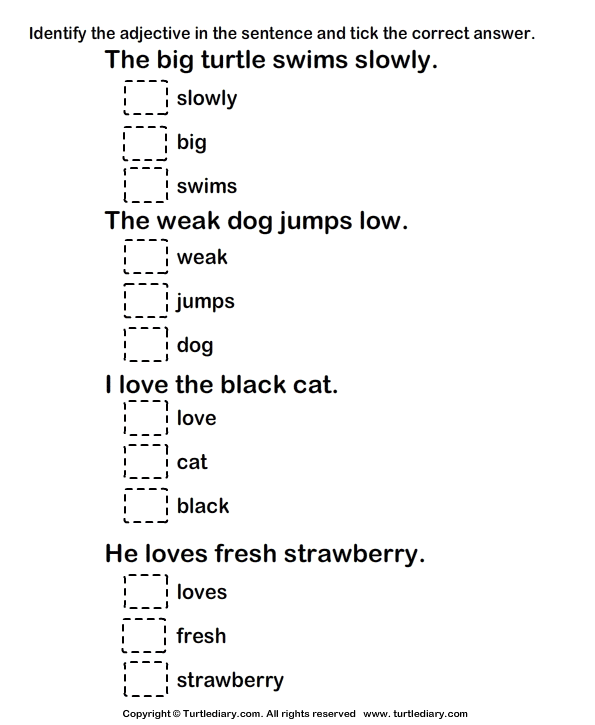 It allows you to
It allows you to
Read More »
Holiday-Themed Early Finisher Activities
Early finisher activities are a must for the holiday season. Your class is going to have a variety of things going on, like holiday projects,
Read More »
Small Group and Partner Activities for Teaching Text Features
Last week, we talked about whole-group activities for teaching nonfiction text features. Today, I am going to share some lessons and activities for partners and
Read More »
Children's Descriptive Adjective List
Children's Descriptive Adjective List can help students understand this part of speech and improve their writing. Describing words for children should focus on adjectives that children have heard or words that are easy for them to pronounce and spell.
What are descriptive adjectives and words?
Words that describe people, places, and things, or nouns, are called adjectives. You can remember this by thinking, "the adjective adds something." nine0003
You can remember this by thinking, "the adjective adds something." nine0003
- A descriptive adjective is one of the three main types of adjectives.
- Descriptive adjectives or descriptive words give detailed information about a subject.
- Descriptive adjectives can help you understand what something looks like, how many it is, what size it is, or what it's made of.
- Homeschooling Myths
- What is School Dropout
- List of Adjectives
Examples of descriptive adjectives for children
Having an extensive list of descriptive adjectives handy can help children improve their vocabulary. You can look at the list of adjectives to see how some describe the words and how others tell you different details about the noun.
dirty truth or dare questions for teenagers
Appearance adjectives
If you need an adjective to describe a child or adult, you can use words that describe their appearance, size, or age in detail. Whenever possible, try to use positive words that describe the person. nine0053 Ready
Whenever possible, try to use positive words that describe the person. nine0053 Ready
Adjectives to describe emotions and feelings
Children have a lot of emotions and they often have very big feelings. Different emotion words can help you express exactly how you feel.


 It is the adjectives that make the language rich, poetic and colorful. Without adjectives, we would not know what a bright sun, what colorful flowers and how delicious fresh bread smells. Only adjectives allow you to tell relatives and friends how beautiful, kind, smart and loved they are. nine0003
It is the adjectives that make the language rich, poetic and colorful. Without adjectives, we would not know what a bright sun, what colorful flowers and how delicious fresh bread smells. Only adjectives allow you to tell relatives and friends how beautiful, kind, smart and loved they are. nine0003 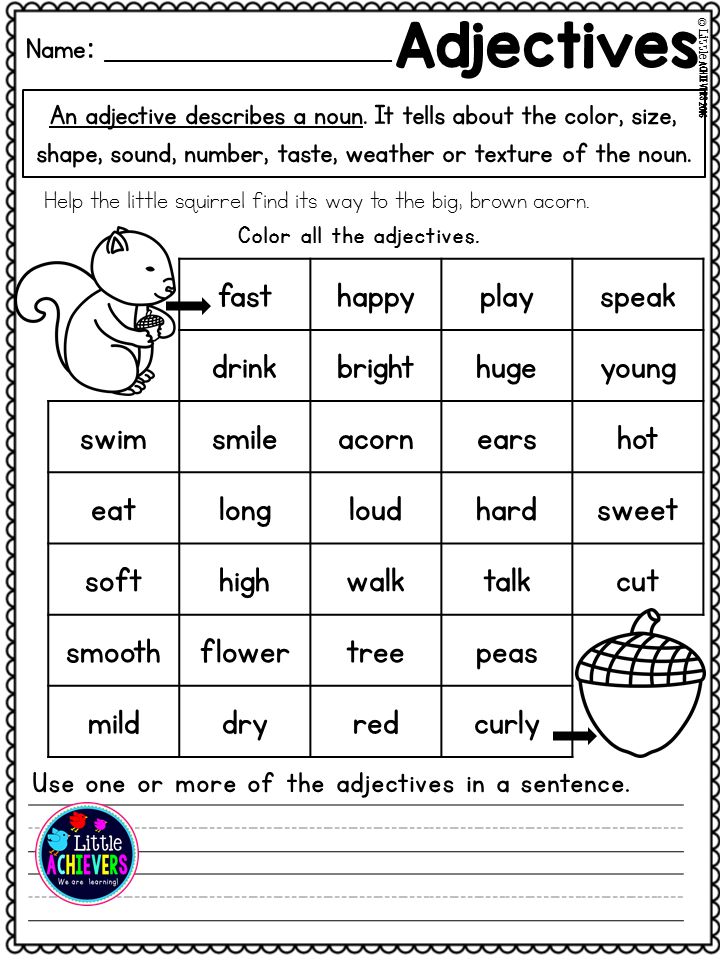 nine0003
nine0003  And the adjective "large", depending on the context, can be translated as significant, significant, numerous. nine0003
And the adjective "large", depending on the context, can be translated as significant, significant, numerous. nine0003 
